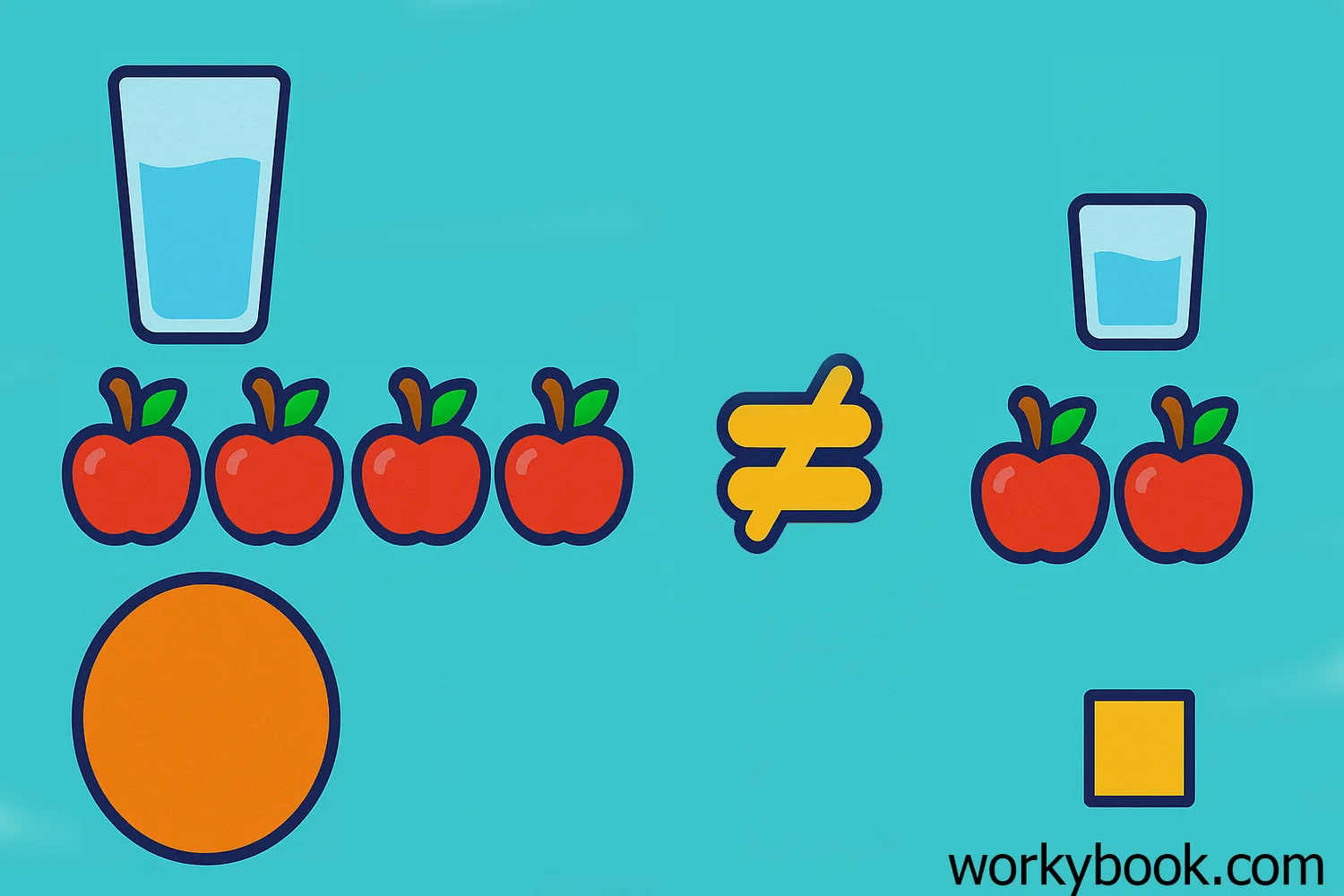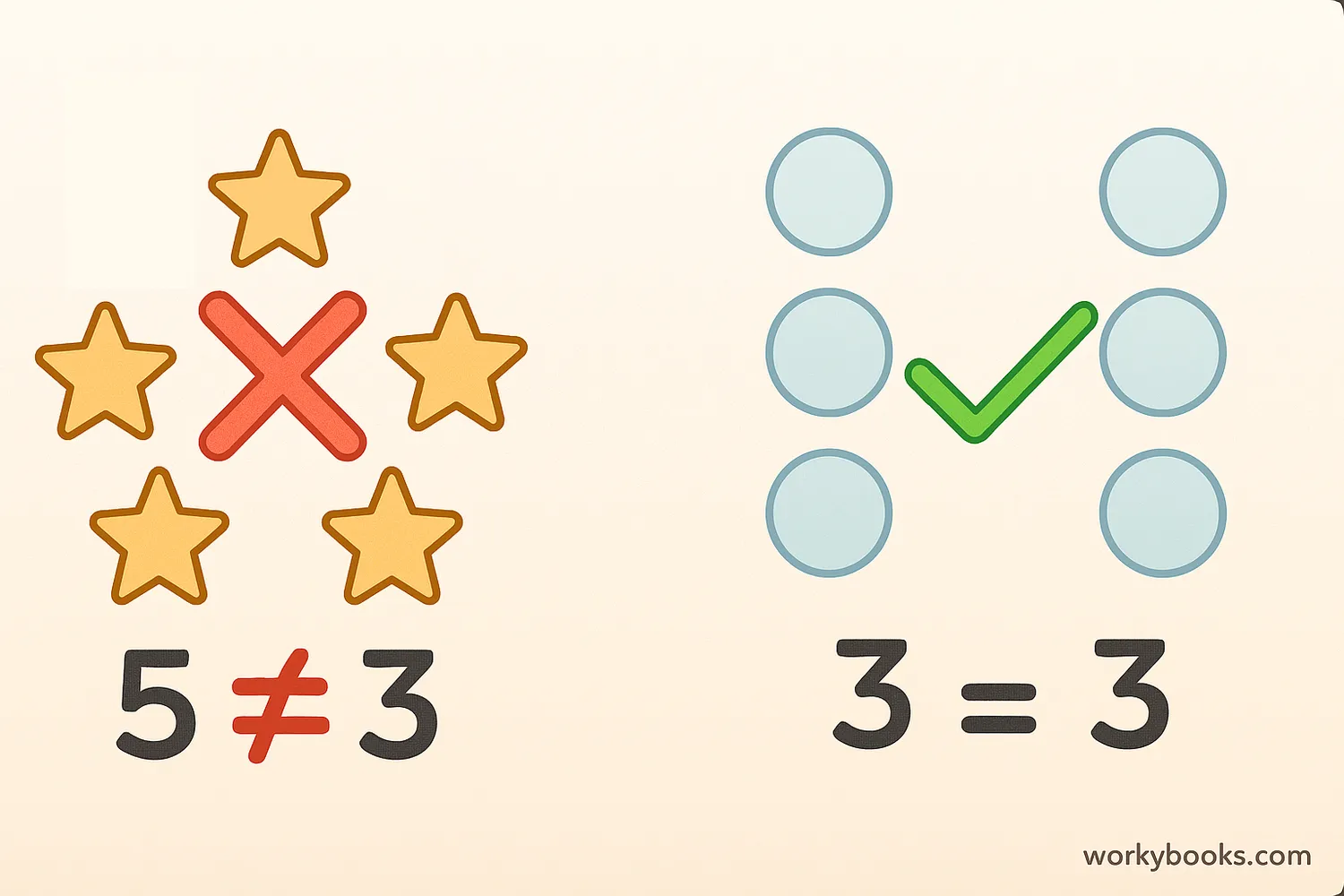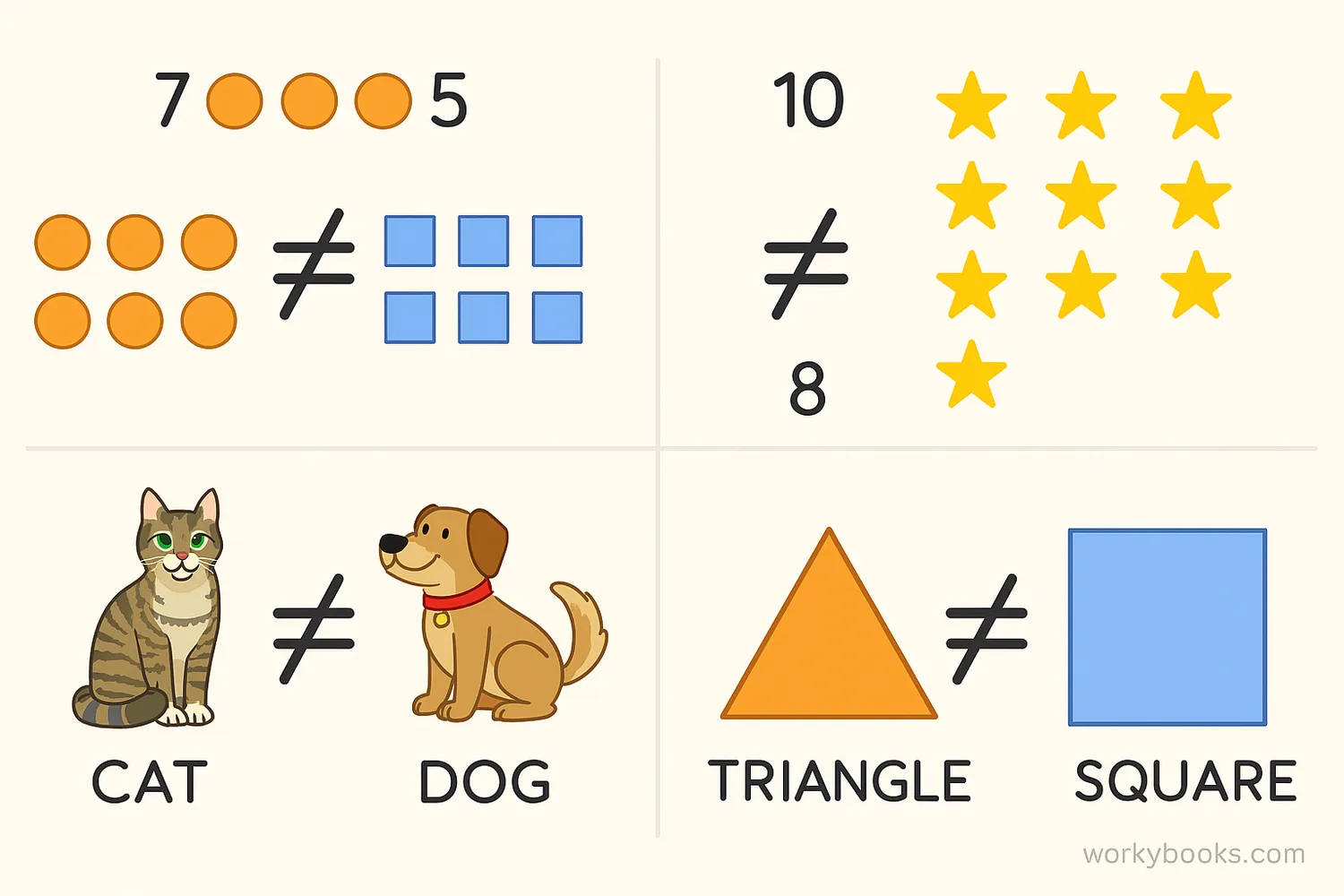Not Equal Sign - Definition, Examples, Quiz, FAQ, Trivia
Understanding Math Symbols and Comparison for Young Learners
What is the Not Equal Sign?

The not equal sign is a special math symbol that shows when two values are different from each other. It looks like this: ≠
Think of it like a "not the same" sign! When you see this symbol between two numbers or expressions, it means they are not equal to each other.
Math Fact!
The not equal sign is sometimes called the "inequality symbol" because it shows when things are unequal or not the same.
How the Not Equal Sign Works

The not equal sign is used to compare two values and show that they are different. Here's how it works:
Compare Values
Look at two numbers or expressions
Check If Equal
Determine if they have the same value
Use the Symbol
If they're different, place ≠ between them
Read It Correctly
Read 5 ≠ 3 as "five is not equal to three"
The not equal sign is the opposite of the equal sign (=). While the equal sign shows that two things are the same, the not equal sign shows they are different.
Examples of Not Equal Sign

Let's look at some examples of how we use the not equal sign:
Number Comparisons
7 ≠ 5 (seven is not equal to five)
Shape Comparisons
Triangle ≠ Square (a triangle is not equal to a square)
Expression Comparisons
2 + 3 ≠ 4 + 6 (five is not equal to ten)
Object Comparisons
Apple ≠ Orange (an apple is not equal to an orange)
The not equal sign helps us show differences in math problems, comparisons, and even in computer programming!
Did You Know?
In some computer programming languages, the not equal sign is written as != instead of ≠ because it's easier to type on a keyboard.
Not Equal Sign Quiz
Test your knowledge with this quiz! Answer all 5 questions to see how much you've learned about the not equal sign.
Frequently Asked Questions
Here are answers to some common questions about the not equal sign:
Math Facts About the Not Equal Sign
Discover some fascinating facts about the not equal sign and math symbols!
Symbol History
The not equal sign (≠) was first used by mathematician Leonhard Euler in the 18th century. He needed a way to show that two mathematical expressions were not equivalent.
In Computers
In computer programming, the not equal sign is often written as != because the ≠ symbol isn't on standard keyboards. So programmers write "if x != 5" instead of "if x ≠ 5".
Around the World
In some countries, the not equal sign is written differently. In Sweden, for example, it's sometimes written as "=/=" instead of "≠". But the meaning is the same!
Learning Tool
Understanding the not equal sign helps build important math skills like comparison, critical thinking, and logical reasoning that are used in more advanced math.





